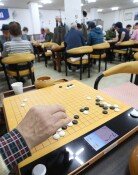Education Ministry`s Public Notice Brings Criticism
Education Ministry`s Public Notice Brings Criticism
Posted May. 10, 2005 23:20,
The fact that the Ministry of Education and Human Resources Development (MEHRD), which recently announced an additional plan to reorganize its professional Graduate School for Medical and Dental Sciences (PGSMDS), sent a related public notice to universities, forcing some universities to accept this plan by connecting this plan with budget support, has brought on public criticism.
On May 4, the MEHRD sent a public notice in which it stated that it desired universities willingly to agree to reorganize their current medical schools into the PGSMDS, and if there are some universities that agree to take part in this plan, they are ordered to submit their reorganization plans until May 21, to 33 universities nationwide.
The public notice clarified that the MEHRD would promote this plan in line with the second wave of Brain Korea 21 (BK 21) projects.
Regarding this matter, an official of a national university said that he received a plan from an official of the MEHRD in which the MEHRD expressed that unless universities reform their current medical schools into PGSMDS, it would take the following measures: exclusion from support of the second wave of BK 21 projects, disapproval of a system that allows university graduates to transfer to medical school, and withdrawal of permission over their law schools.
With regards to the MEHRDs plan, some universities have opposed it by saying, What the MEHRD is pushing for by mentioning not only the education grant, but also some fields that are totally different from medical schools, is against common sense.
In the meantime, Seoul National University (SNU), which has opposed the reform of its medical school into the PGSMDS all the while, distributed a related public notice to its all professors and held a countermeasures meeting on the afternoon of May 10.
Wang Gyu-chang, the dean of the college of medicine of the SNU, said, There is no problem with us educating the professional medical workforce through the current six-year system, and the SNU already has utilized a system of four-year (bachelor) and four-year (regular courses).
He added, Im wondering whether all the universities should coercively follow the MEHRDs goal of aiming to reduce private tutoring expenses by blocking high school students from entering medical and law schools.
Concerning the controversy, Seo Yu-mi, head of the Research and Development Division of the MEHRD, said, With regards to the granting of BK 21 projects, it was decided on by the government and universities, adding, Although I dont know who said that if universities concerned do not reorganize their current medical schools into PGSMDS, they would be excluded from the grant list, those remarks are not an official MEHRD position.
Jae-Young Kim Seong-Chul Hong jaykim@donga.com sungchul@donga.com







